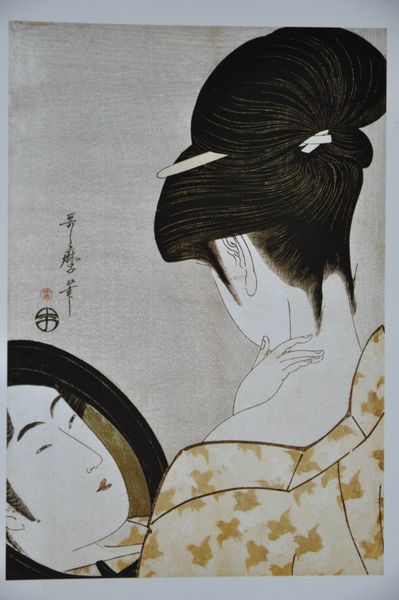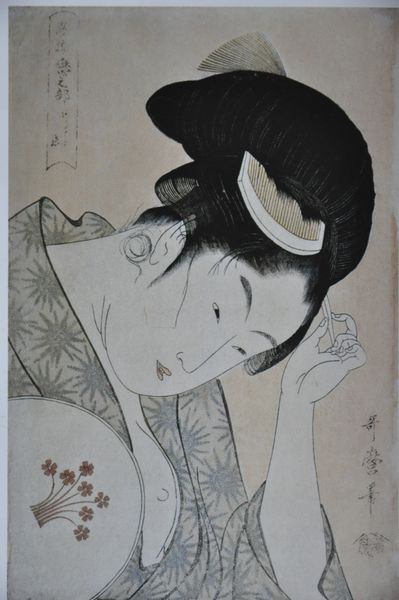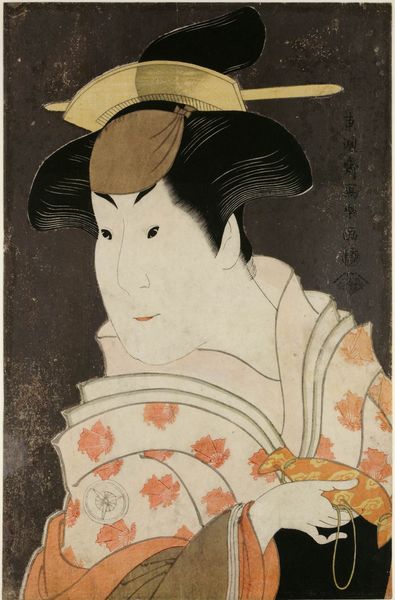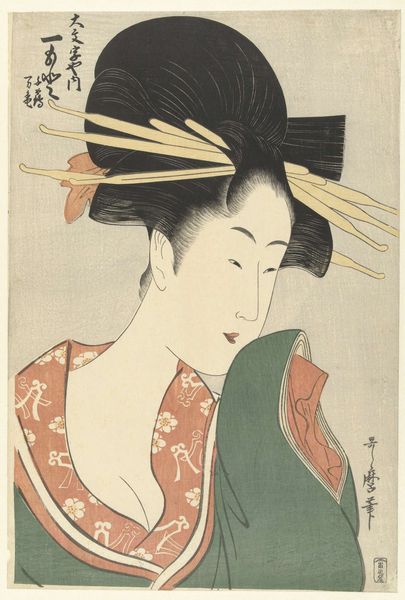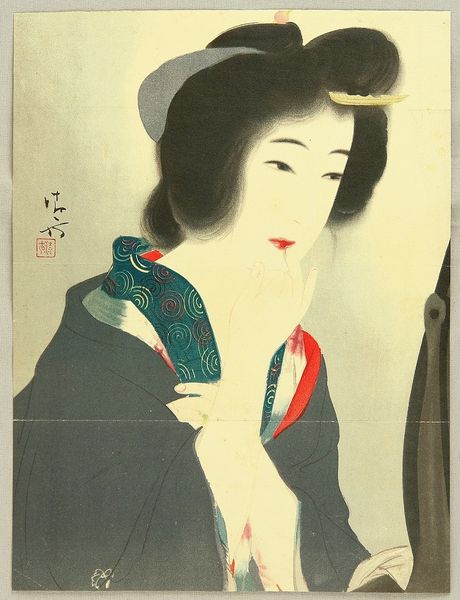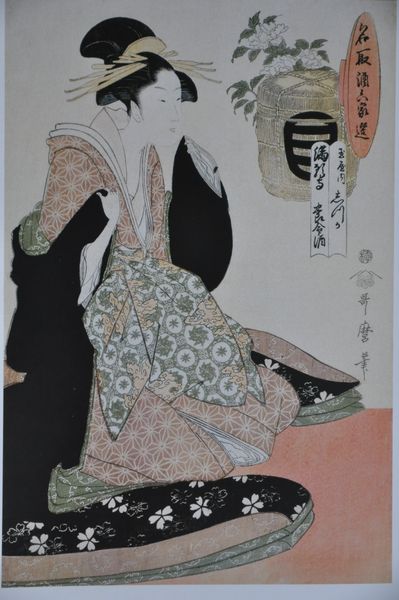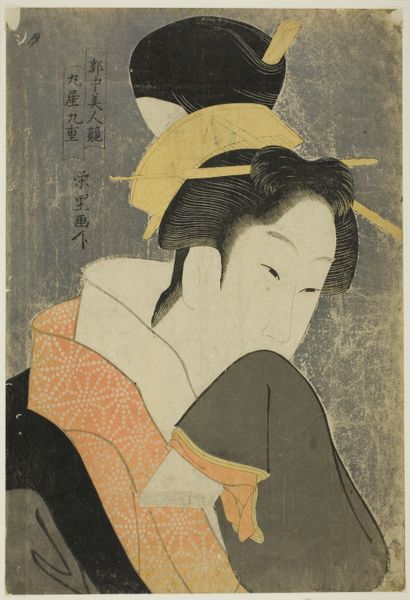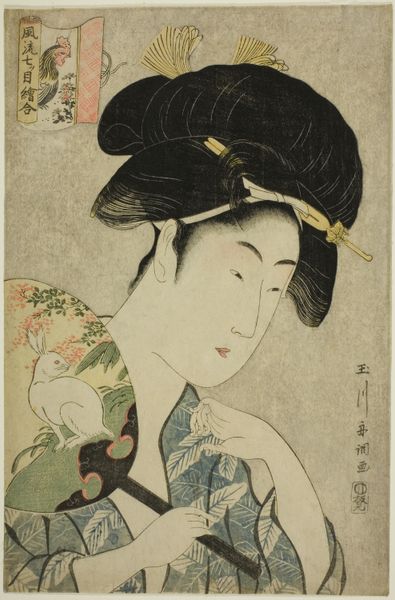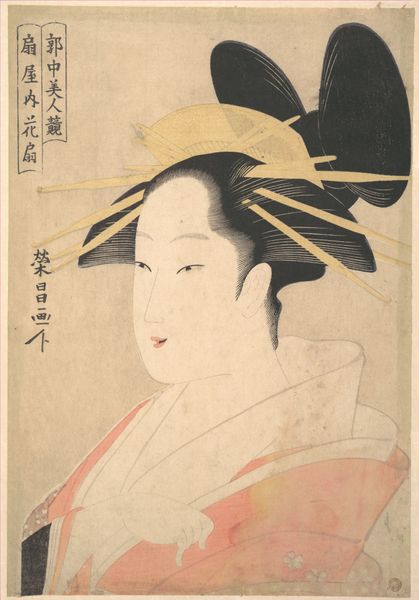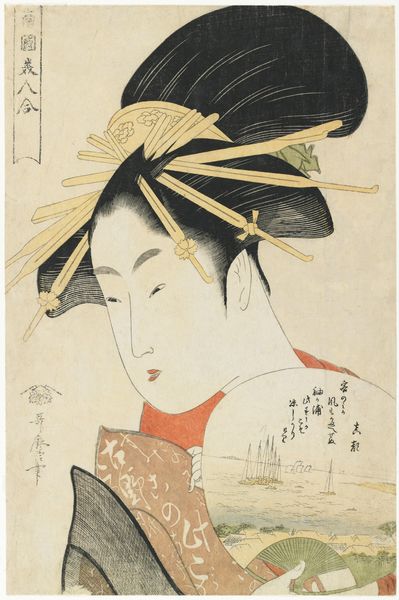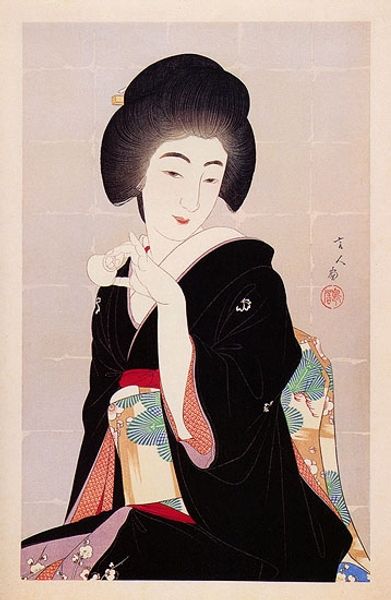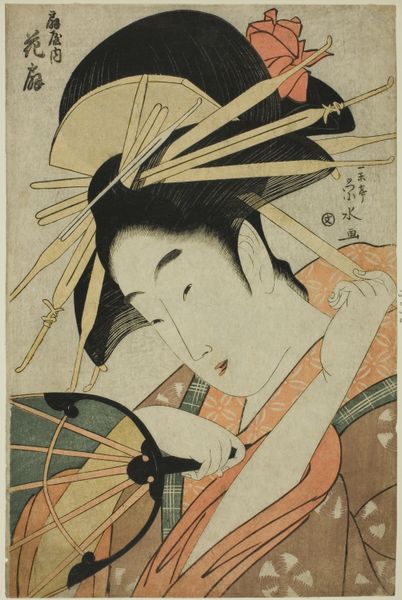
print, woodblock-print
#
portrait
# print
#
asian-art
#
caricature
#
ukiyo-e
#
figuration
#
woodblock-print
#
orientalism
#
portrait drawing
#
portrait art
Copyright: Public domain
Editor: Here we have Kitagawa Utamaro’s woodblock print, "Secret Love." There's an incredible stillness to this piece, despite the subject matter suggested by the title. What does it bring to mind for you? Curator: It makes me consider the social context of Ukiyo-e prints in Japan. They weren't just decorative; they circulated information and depicted contemporary life. What do you think "secret love" meant in that society? Was it illicit, or just private? And how did prints like this shape perceptions of women and romance? Editor: I hadn't considered how actively they shaped perceptions! I guess I was just seeing it as an isolated portrait. Is it a portrait of a specific person or more of an archetype? Curator: That's an important question! Ukiyo-e often blended individual likeness with idealized beauty standards. We see those exaggerated, graceful features, the elaborate hair. Was this woman real, or a carefully constructed ideal circulating within a certain cultural milieu? Editor: So, it's less about capturing a unique individual and more about projecting a specific image of feminine beauty and perhaps desire, to the broader public? Curator: Precisely. The political economy of these images – how they were produced, distributed, and consumed – reveals a great deal about social values and power dynamics. Did the proliferation of these prints democratize art or simply commodify desire? Editor: It’s fascinating to think about it less as just "art" and more as a cultural artifact intertwined with societal expectations and commercial forces. It definitely changes how I see it. Curator: Absolutely! Art always operates within a complex network of cultural, social, and economic factors. Thinking about these helps unlock its richer meaning.
Comments
No comments
Be the first to comment and join the conversation on the ultimate creative platform.

